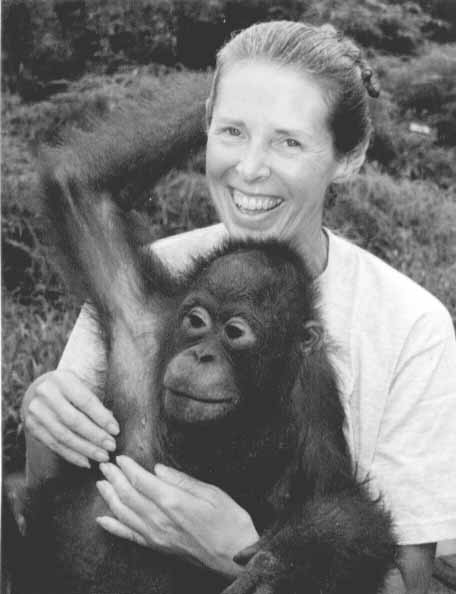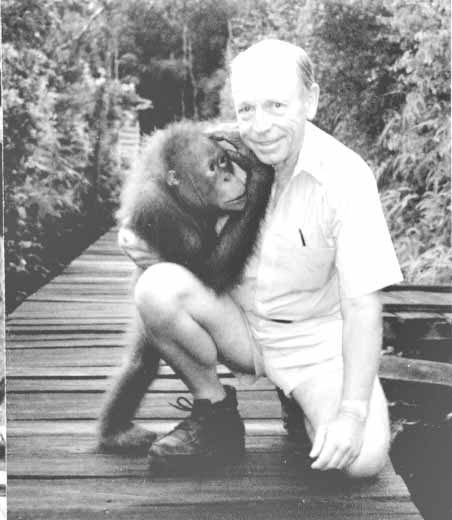 When we arrived at Kumai there were three American boats and one British boat in the anchorage. The Brits had already seen the orangutan rehabilitation camps and were planning an inland trip but the Americans had just arrived. A yacht arranger, Gian, came to the boat and assured us he could make arrangements for us to do our necessary yacht clearances and our trip to the rehabilitation centers. He had arranged the trip for the British boat and they said they had a good time.
When we arrived at Kumai there were three American boats and one British boat in the anchorage. The Brits had already seen the orangutan rehabilitation camps and were planning an inland trip but the Americans had just arrived. A yacht arranger, Gian, came to the boat and assured us he could make arrangements for us to do our necessary yacht clearances and our trip to the rehabilitation centers. He had arranged the trip for the British boat and they said they had a good time.We and the other Americans arranged with him for boats to take us on a three-day trip into the Tanjung Puting National Park located in the southern part of Borneo. It is a 74,109 acre reserve of tropical rain forest and wetlands. Our objective was to visit the orangutan rehabilitation camps along the northeast edge of the park. Orangutan means “man of the forest” in Indonesian. These apes are found only in Indonesia.
From the town of Kumai we went down the Sungai River a short way to the Sungari Sekonyer (right branch of the Sungai). This branch had huge plants along the banks that looked like palm bushes. At that point it was hard to decide who I felt more like; Cleopatra on a Nile barge, or Rosie on the African Queen. Later, the vegetation changed to a variety of trees, plantanus plants and four feet high water lilies.
The first orangutan rehabilitation camp we came to was Tanjung Harapan; our guides called it Camp Number One. There was a sturdy wooden dock and walkway. On the edge of the dock in the bushes was a gibbon monkey. I walked over, talking to it, hoping it wouldn’t run away. The little thing swung onto the dock, climbed up my leg and was in my arms before I knew what happened. I looked at the ranger to see if it was O.K. He explained that they think of adult humans as parents because of our size. He told me that the gibbon’s name was Michael.

Michael was an Agile Gibbon monkey with a little human-like black-skinned face and ears with large brown eyes fringed with white fur. The rest of his head and body were covered with gray medium-length fur. He is about two years old and weighs about ten pounds. The others in the group began talking to him and he finally got down on the dock to have his tummy rubbed. A young female macaque monkey came onto the dock and started acting aggressively toward me, showing her teeth and making noise. The ranger cautioned that she was jealous of Michael and other females (human or ape) and that it would be wise to stand back because she might biite. She posed no problem for the men. Forget about sisterhood!
As we checked into the ranger station, the ranger explained to us that this was the camp that catered to young primates under the age of five years. There happened to be three orangutans, Michael, and the macaque there at the present time. They had just released another gibbon that morning who had returned to the jungle. The gibbon had been found in Kumai and purchased (illegally) by a yachting family that turned it over to the rehabilitation program. The camp kept it for about a week to make sure it was healthy and then released it. The family that found it was hoping it would be a mate to Michael. He was a charmer!
The rangers showed us the three little orphan orangutans high up in a tree busy building a nest. Harry suggested we eat lunch and then come back for the feeding at three o’clock. The orangutans are fed twice daily at this camp.